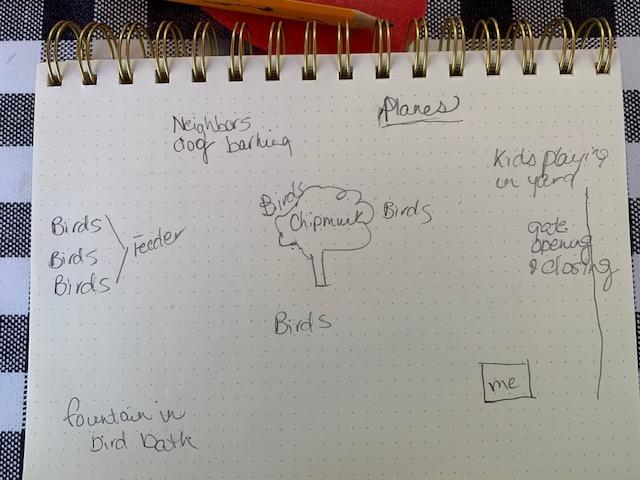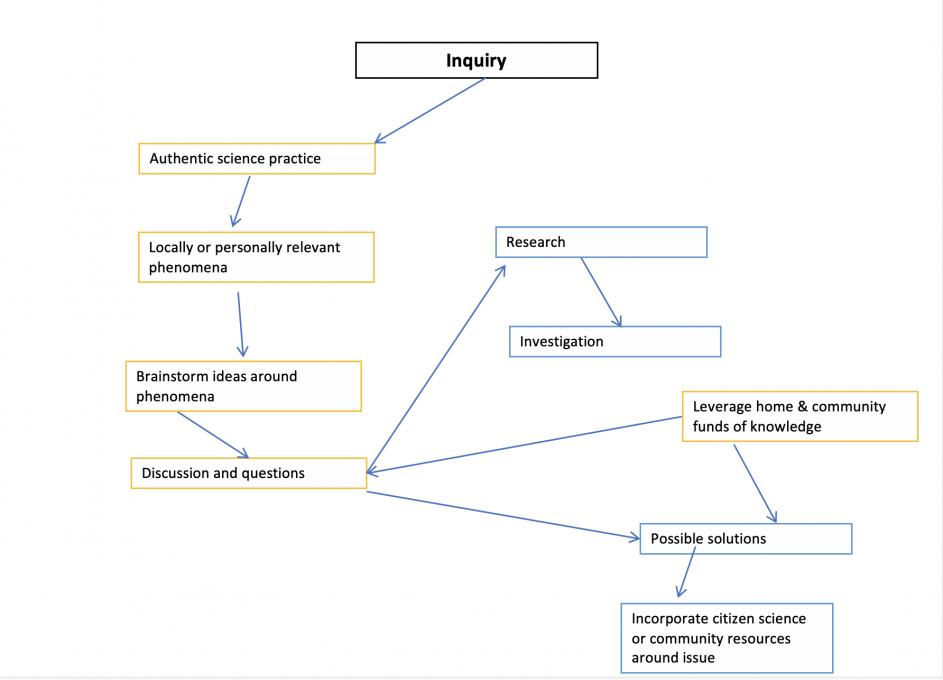Nancy
Forum Replies Created
Viewing 7 posts - 1 through 7 (of 7 total)
-
NancyParticipantI participated in e-bird. The biggest challenge is figuring out if you are seeing the same birds over and over during the bird count. The little brown birds are particularly difficult to identify and differentiate. I think students could learn to identify birds by very close observation and learning the difference between birds that look similar. Or they could learn to identify them by their calls or the way they eat.
-
NancyParticipantTaking students outdoors to learn about their local environment is so important. I know it feels difficult, particularly in an urban environment. But there are things in every community that can inspire questions and interest in students.
-
NancyParticipantThis was a very meditative exercise. I spend a lot of time in my yard and never really stop to listen. I think that this could be very useful to get students to hear nature. Not to mention learning to listen for and identify birds by their song.

-
NancyParticipantI think that helping students understand that when they take part in a citizen science project, they are contributing to real world scientific data. This makes the work they do an authentic part of science and has benefits beyond the classroom.
-
NancyParticipantI think I am most interested in Interacting with complex social and ecological systems. To me, this speaks to social justice, multispecies justice and community involvement. From STEM Teaching Tool #74. Community science has great potential to increase the diversity of public participation in science and to support local flourishing. For that to happen, projects must reflect the diversity of communities and their concerns without reinforcing existing inequities in science and society.
-
NancyParticipantI was part of a project that incorporated citizen science through the oceanography department at the UW. Students collected water from different parts of the area and sent it in to be analyzed by the lab. Then they received results and talked about the chemical compounds in the water, and how pollution was affecting water across Seattle. One way that I think this project served the youth in the after school program was by making the project locally relevant. Students collected water in their local community to understand what was happening in their own places.
-
NancyParticipant
 I tried to think about inquiry with a concrete phenomena to capture the concept. In my work inquiry begins with an authentic scientific phenomena that needs to be investigated, and if possible, have potential solutions. I try to make the phenomena locally or personally relevant. Since I live in Washington, I thought about the Sage Grouse, which is an endangered species in this state. I would ask the students to think around why the numbers of Sage Grouse are declining and let them brainstorm, research, talk to their families and perhaps local community members about why they think it is happening. If possible, I would take them to the territory where Sage Grouse live or where they used to be prevalent. Then I would ask students to brainstorm solutions to the decline, offering citizen science as a possible way to contribute to the larger body of science that is working this problem. in reply to: Virtual Educator Retreat: Intro to Inquiry #826258
I tried to think about inquiry with a concrete phenomena to capture the concept. In my work inquiry begins with an authentic scientific phenomena that needs to be investigated, and if possible, have potential solutions. I try to make the phenomena locally or personally relevant. Since I live in Washington, I thought about the Sage Grouse, which is an endangered species in this state. I would ask the students to think around why the numbers of Sage Grouse are declining and let them brainstorm, research, talk to their families and perhaps local community members about why they think it is happening. If possible, I would take them to the territory where Sage Grouse live or where they used to be prevalent. Then I would ask students to brainstorm solutions to the decline, offering citizen science as a possible way to contribute to the larger body of science that is working this problem. in reply to: Virtual Educator Retreat: Intro to Inquiry #826258
Viewing 7 posts - 1 through 7 (of 7 total)

 I tried to think about inquiry with a concrete phenomena to capture the concept. In my work inquiry begins with an authentic scientific phenomena that needs to be investigated, and if possible, have potential solutions. I try to make the phenomena locally or personally relevant. Since I live in Washington, I thought about the Sage Grouse, which is an endangered species in this state. I would ask the students to think around why the numbers of Sage Grouse are declining and let them brainstorm, research, talk to their families and perhaps local community members about why they think it is happening. If possible, I would take them to the territory where Sage Grouse live or where they used to be prevalent. Then I would ask students to brainstorm solutions to the decline, offering citizen science as a possible way to contribute to the larger body of science that is working this problem.
I tried to think about inquiry with a concrete phenomena to capture the concept. In my work inquiry begins with an authentic scientific phenomena that needs to be investigated, and if possible, have potential solutions. I try to make the phenomena locally or personally relevant. Since I live in Washington, I thought about the Sage Grouse, which is an endangered species in this state. I would ask the students to think around why the numbers of Sage Grouse are declining and let them brainstorm, research, talk to their families and perhaps local community members about why they think it is happening. If possible, I would take them to the territory where Sage Grouse live or where they used to be prevalent. Then I would ask students to brainstorm solutions to the decline, offering citizen science as a possible way to contribute to the larger body of science that is working this problem.